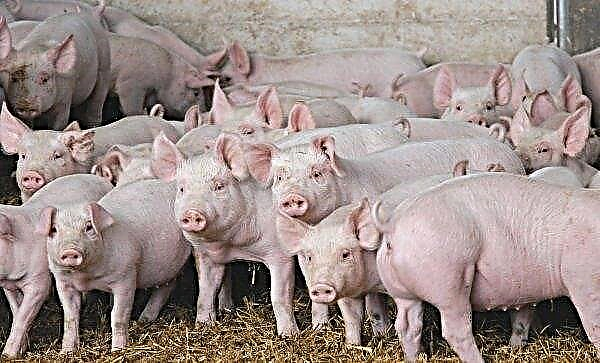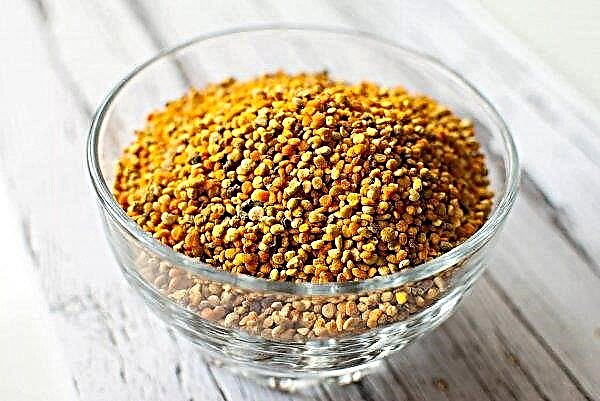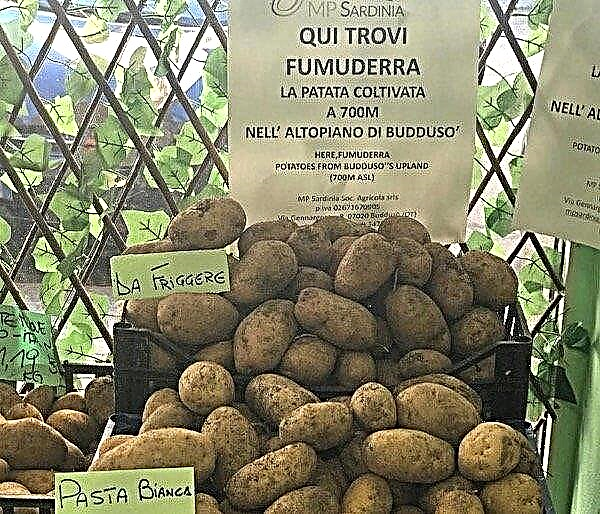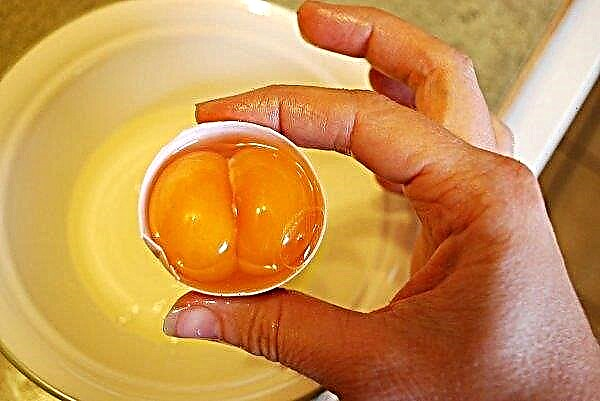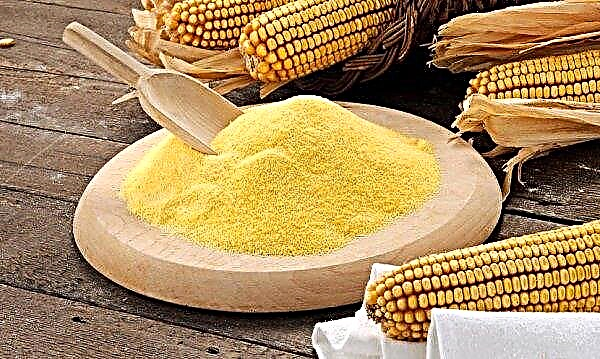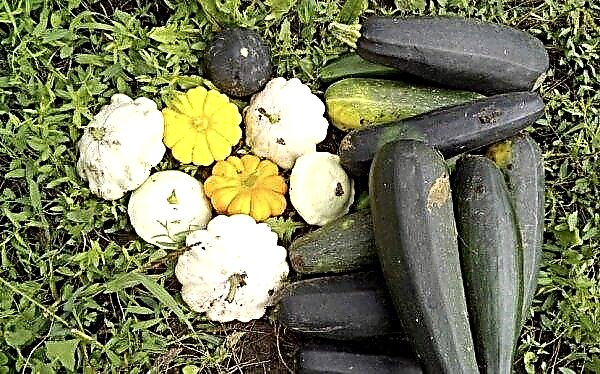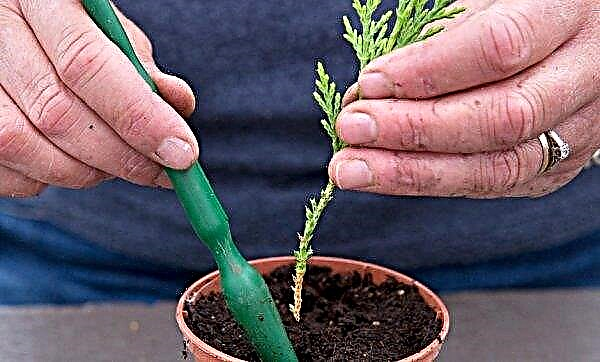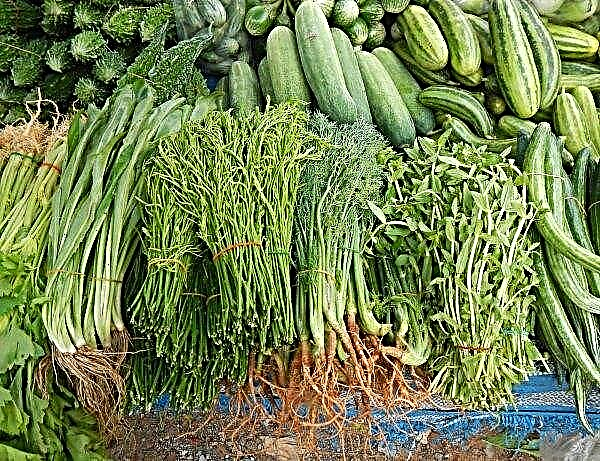Milkweeds are not the most popular plants for home or outdoor flower garden. But some of them are captivating with their external data and unpretentiousness, so flower growers are happy to cultivate the varieties they like.
Botanical description of the plant
Pedilanthus is a rather unusual plant, the appearance of which resembles artificial flowers made of plastic. However, it exists, lives and pleases its owners with a beautiful appearance. This foliage succulent is similar to some species of ficus (for example, Benjamin's ficus). The name of the plant comes from the shape of its flowers: in Greek, pedilon means "shoe", and anthos - "flower".
The genus of pedilanthus contains 15 subspecies, each of which is original in its own way - there are shrubby, succulent and grassy forms. Unites them only milky juice, which flows along the stems of plants.
Photo gallery
Flowers of unsaturated red color, have an external similarity in form to a woman’s shoe, for which this euphorbia was popularly called “fairy shoes”. During flowering, "shoe boats" simply strew the bush.
The birthplace of pedilanthus is the coast of the Atlantic Ocean and forests on the shores of the Amazon. Most of the species of this plant grow here, which were able to adapt to living conditions in a pot on the windowsill.
Did you know? This succulent has more than one name. The most original of them is “Jacob's Ladder” - after throwing out each leaf, the trunk changes its direction of growth, therefore in ancient times it was associated with a biblical character.
The main botanical indicators are presented in the table:
| Root system | developed, wide |
| Stem | fat, fleshy |
| Leaf shape | oval, corrugated |
| Leaf color | light green with white border |
| Flower shape | complicated, like a shoe |
| Flower color | light red, dark pink |
| Bloom | plentiful |
House growing conditions
Like any succulent, pedilanthus is not too picky. Its cultivation does not cause any difficulties even for beginner growers.
Placement and lighting
The bush loves sunny window sills that need to be shaded during the summer heat. However, this euphorbia can be successfully grown even on the northern windows. The plant needs to create an atmosphere of long daylight hours even in winter - for this, lighting fixtures with cold light are desirable so as not to disturb it during the rest period. In summer, you can put the pot on the balcony or in the courtyard of a private house - fresh air has a beneficial effect.
Temperature mode
Pedilanthus thymaloid is not too picky about the temperature of cultivation. This does not mean that it can be too overheated or cooled, but it will withstand some of the “hardships”.
In summer, on a shaded windowsill, the temperature should be +20 ... + 25 ° С, during periods of July heat, the bush will transfer +28 ° С for some time. In winter, a temperature drop of up to +18 ° С is acceptable, and at +14 ° С the leaves can crumble before spring.
Important! In winter, it is possible to keep it at higher temperatures, but the color of leaves and flowers will suffer significantly.
Air humidity
The plant does not need to spray or install special humidifiers - this succulent is able to manage on its own for a long time and feels normal in dry air. If the air remains too dry for a long time, the plant may lose its leaves, but it will not begin to die from this. If the weather is dry for a long time or if you plan to leave for several days, you can put an open container with water near the pot.
Home Care
Pedilanthus is perfect for growing a house - it is unpretentious to living conditions and very responsive to the care of the owners.
Watering
The frequency of watering may be different, depending on the time of year, but the main indicator is a slight omission of leaves. The condition of the soil is also monitored - if the soil in the pot has dried to a depth of 1-2 centimeters, the plant must be watered. During the winter dormant period, the bush should be watered 1-2 times a month.
We recommend that you familiarize yourself with other types of milkweed:
For irrigation, 1-2-day-old tap water is used, which will be quite soft and without settled impurities. Water flows into the root zone, without spraying on the trunk and leaves. The temperature of the liquid should be room temperature or slightly lower - +23 ... + 28 ° С.
Top dressing
The soil requirements of pedilanthus are low, therefore, the need for top dressing is small. The main thing is that the earth is loose and well breathable.  You can use standard fertilizers for indoor plants once a month or purchase more expensive fertilizers for succulents. In winter, the plant does not interfere with rest and does not fertilize.
You can use standard fertilizers for indoor plants once a month or purchase more expensive fertilizers for succulents. In winter, the plant does not interfere with rest and does not fertilize.
Important! Pedilanthus do not tolerate nitrogen top dressing, so before applying fertilizers, you need to check their composition.
Pruning
After winter, the bush can form a beautiful crown - this plant tolerates pruning well. And the update process itself is very useful. In the spring, not only trimming of problematic branches is carried out, but also all branches are updated so that the bush has a beautiful crown. To do this, pruning of all branches is carried out: small processes (10 cm) with several buds are left, which immediately begin to actively grow.
Transfer
The plant is transplanted fairly regularly - the need for transplantation is determined by filling the substrate with roots, but at least every 1-2 years. The new pot should be 2-3 cm larger than the previous one both in height and in diameter. It is necessary to transplant this succulent in the middle of spring, when it has already moved away from the rest period and gained strength. The process takes place according to the following scheme:
The process takes place according to the following scheme:
- a layer of expanded clay or pebbles is laid out at the bottom of the new pot - this will ensure the quality removal of excess water;
- part of the earthen mixture for succulents is stacked;
- the flower is placed in a pot;
- the roots are sprinkled with soil;
- the soil is neatly compacted;
- abundant watering of the new mixture.
Important! The plant must be placed for several days in a shaded place with a slight diffused light. This will provide him with peace and will allow him to overcome the stressful situation after transplantation.
Breeding methods
Propagation of pedilanthus is carried out by traditional methods - by grafting and using seeds.
Cuttings
During spring pruning, you can select the most powerful cuttings and try to grow a new plant from them. This is done as follows:
- the blade cuts off the selected stalk;
- the sprout is washed in clean water;
- dried out in a cool place for a day;
- planted in dried sand or perlite;
- soil temperature is maintained at about +25 ° C.
Video: How to propagate pedilanthus by cuttings
You can wait for the roots to appear at the sprout by placing it not in the soil, but in a glass with ordinary water. In this case, the chances of obtaining high-quality material for propagation are much less, but the time and material costs are also few.
Seed cultivation
It’s even easier to try to grow pedilanthus from seed that has been collected or purchased. Seeds are soaked a few hours before planting in decanted water, after which they are washed with a potassium permanganate solution and planted in a soft neutral substrate to a depth of one centimeter.
The plant does not lose its varietal properties with any type of propagation, however, cuttings are the most convenient and effective way.
Did you know? The juice of any milkweed is extremely diverse in the toxic substances contained in it. Even in ancient Greece and ancient Rome, when collecting plants, local residents tied their nose and mouth with a protective bandage.
Possible difficulties
A beautiful bush and good flowering will not work if the conditions for caring for the plant are not observed, if it is damaged by diseases or pests.
Care problems
Succulents are not too susceptible to various diseases. Most often, problems arise not due to diseases or exposure to parasites, but from improper watering or growing conditions.
Problems and their solutions can be as follows:
- The bush does not bloom. In winter, he did not rest, it was warm and dry. It is necessary to stabilize its environment and maintain proper growing conditions.
- Dropping leaves. The consequence of drafts, a sharp move to a new place, overheating. Normal stems will let out new leaves, and damaged ones are removed.
- Dryness at the ends of the leaves. The air in the room must be humidified.
- Discoloration of foliage. Light leaves indicate a lack of light, and dark leaves indicate an excess of nitrogen in top dressing.
- Elongated shoots, lightening of individual leaves, violation of the shape of the bush. Incorrect lighting, soil drainage, incorrect or insufficient pruning.

Disease
Diseases usually bypass the plant, as it is quite strong. Of the common serious ailments, this succulent can be affected by fungi, which are easily removed by pinching sick leaves.
Pests
In case of excessive moisture or insufficient care, the pedilanthus may be attacked by insects. If you do not fight parasites, the bush lowers or drops leaves, withers and dies.
Common pests for a flower are the following insects:
- Spider mite. A spider web appears on the back of the foliage during a drought. Such sheets are washed with soapy water, and places of serious accumulation are destroyed by cutting off the affected sheets.
- Mealybug. Small sticky fluff appears in the axils of the leaves. The leaves of the diseased bush are washed with an alcohol swab. If there are too many parasites, the plant is treated with an insecticide.
- Aphid. Most often, the euphorbia attacks during its summer stay in the open air on the verandas of cottages, courtyards of the private sector or on the balconies of apartments. This flower is not the most desirable for aphids, but she does not mind staying on it. Insects are washed off with warm water, twisted leaves are removed, and the entire bush is treated with an insecticide.
- Whitefly Small white midges that gather on stems and leaves. Whitefly leaves become sticky. You can remove parasites with a soap solution and high-quality sanitization.
Signs and superstitions
As with other indoor flowers, folk beliefs are associated with pedilanthus, which force indoor gardeners to grow this plant at home or completely abandon it. For example, buying a bush or secretly pinching a stalk in a public place can lead to an improvement in social status, professional growth, or a change of job for a better and more prestigious one. But in the personal life of a woman, with the appearance of such a flower in the house, problems may arise - it is believed that plants with variegated leaves scare men from their homes. In any case, it is worth considering that this is an euphorbia, whose juice is poisonous, and it does not belong in children's rooms.
For example, buying a bush or secretly pinching a stalk in a public place can lead to an improvement in social status, professional growth, or a change of job for a better and more prestigious one. But in the personal life of a woman, with the appearance of such a flower in the house, problems may arise - it is believed that plants with variegated leaves scare men from their homes. In any case, it is worth considering that this is an euphorbia, whose juice is poisonous, and it does not belong in children's rooms.
Pedilanthus, like every succulent, feels great in conditions that at least copy tropical ones. On sunny but shaded window sills, or in a summer garden in the shade of trees, he will delight in the lush growth and colorful flowering.

